
The Tagus is the longest river in the Iberian Peninsula. The river rises in the Montes Universales near Teruel, in mid-eastern Spain, flows 1,007 km (626 mi), generally westward, and empties into the Atlantic Ocean in Lisbon.

Castilla–La Mancha is an autonomous community of Spain. Comprising the provinces of Albacete, Ciudad Real, Cuenca, Guadalajara and Toledo, it was created in 1982. The government headquarters are in Toledo, which is the capital de facto.

Toledo is a province of central Spain, in the western part of the autonomous community of Castile–La Mancha. It is bordered by the provinces of Madrid, Cuenca, Ciudad Real, Badajoz, Cáceres, and Ávila. Its capital is the city of Toledo.
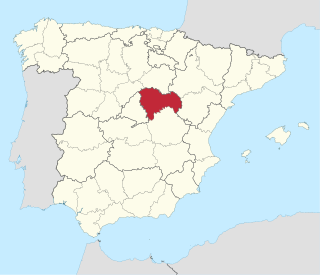
Guadalajara is a province of Spain, belonging to the autonomous community of Castilla–La Mancha. As of 2019 it had a population of 258,890 people. The population of the province has grown in the last 10 years. It is located in the centre of the Iberian Peninsula.
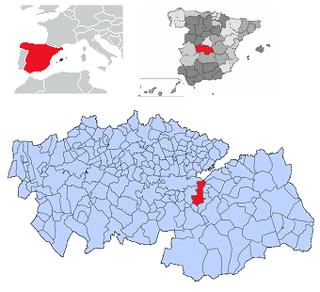
The Battle of Almonacid was fought on 11 August 1809 during the Peninsular War between Sébastiani's IV Corps of the French Peninsular Army, which King Joseph of Spain had withdrawn from the Battle of Talavera to defend Madrid, and the Spanish Army of La Mancha under General Venegas. After the decisive charges of Polish uhlans, the battle resulted in a French victory.
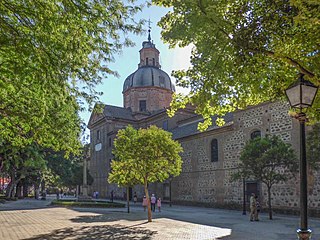
Talavera de la Reina is a city and municipality of Spain, part of the autonomous community of Castile–La Mancha. Its population of 83,303 makes it the second most populated municipality of the province of Toledo and the fourth largest in the region.

Monfragüe is a Spanish national park noted for its bird-life. It is situated in the center of a triangle formed by Plasencia, Trujillo and the city of Cáceres within the province of Cáceres. Monfragüe is also a comarca of Extremadura, western Spain.

Battle of Alarcos, was fought between the Almohads led by Abu Yusuf Ya'qub al-Mansur and King Alfonso VIII of Castile. It resulted in the defeat of the Castilian forces and their subsequent retreat to Toledo, whereas the Almohads reconquered Trujillo, Montánchez, and Talavera.

The Castle of Gormaz is a large castle located in Gormaz, Spain. Its current structure was built in 965 to defend the borders of the Caliphate of Cordoba. At the time of its construction, it was the largest fortress in Europe.

Gamonal is a little Spanish village, situated in the municipality of Talavera de la Reina.

Alameda de la Sagra is a municipality located in the province of Toledo, Castile-La Mancha, Spain. According to the 2008 census (INE), the municipality has a population of 3324 inhabitants.
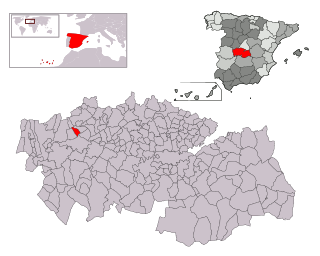
Segurilla is a municipality located in the province of Toledo, Castile-La Mancha, Spain. According to the 2017 census (INE), the municipality has a population of 1,345 inhabitants. It is located 9 km north of Talavera de la Reina, the second largest town of the Province of Toledo
Valdeverdeja is a municipality located in the province of Toledo, Castile-La Mancha, Spain. It belongs to the Campana de Oropesa region and has 647 inhabitants according to the 2006 census (INE). The municipal area is 67 km², and it has a population density of 10.04 inhabitants per km².
Velada is a municipality located in the province of Toledo, Castile-La Mancha, Spain. According to the 2006 census (INE), the municipality has a population of 2,436 inhabitants.

San Martín de la Vega del Alberche is a town and municipality located in the province of Ávila, Castile and León, Spain. According to the 2006 census (INE), the municipality had a population of 244 inhabitants. However, in 2019, the town has experienced a decrease of inhabitants to 168. The Alberche River which has its source approximately 2 km's west of the town, passes through the lower part of the town before joining the Tagus River just east of Talavera de la Reina.

The Battle of Almaraz was fought during the Peninsular War on 18–19 May 1812, in which the Anglo-Portuguese Army under Lord Hill destroyed a French pontoon bridge across the River Tagus, in Almaraz, Spain. The bridge was protected by two French garrisons at either end.

Juan de Talavera was a Spanish architect, sculptor and carver, member of the "Toledo School of Architecture", and architect of Queen Isabella I of Castile. Probably his father was also named Juan de Talavera, and he was a nephew of Andrés de Talavera, both working in the Cathedral of Seville circa 1450. Juan de Talavera married Maria Gutierrez, daughter of Egas Coeman or Egas of Brussels and he was probably also a nephew of Juan Guas by his wife.
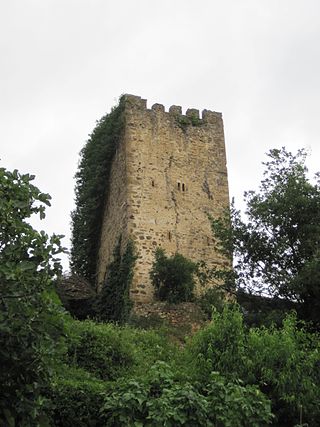
In Cantabria, there is a big number of fortified towers that fulfilled functions of housing and defense. These buildings, generally battlements, were erected mostly between the 13th and 15th centuries by noble families and influenced significantly in the architecture of Cantabria, passing some to be forts-houses, prelude to the future casona montañesa. A curious fact is that there are not in the region circular towers, as yes happens in the neighboring community of Asturias. Currently of the towers that survives several are in a deplorable condition.

The Muslim Walls of Madrid, of which some vestiges remain, are located in the Spanish capital city of Madrid. They are probably the oldest construction extant in the city. They were built in the 9th century, during the Muslim domination of the Iberian Peninsula, on a promontory next to Manzanares river. They were part of a fortress around which developed the urban nucleus of Madrid. They were declared an Artistic-Historic Monument in 1954.
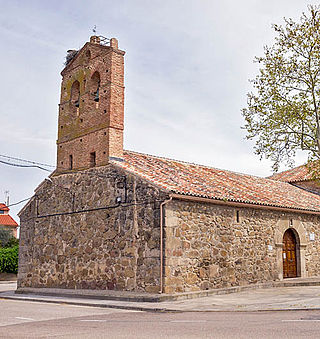
El Casar de Talavera is a EATIM and village belonging to the municipality of Talavera de la Reina, province of Toledo, Castilla–La Mancha, Spain.




















